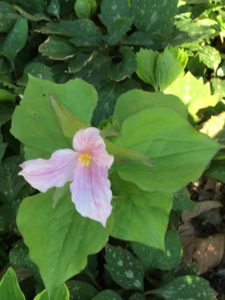
The natural processes of the evolution of natives plants results in the healthy ecosystems which sustain a complex web of biological diversity. The myriad of benefits derived from native plant species promotes their use in the landscape and the need for their conservation and protection in the wild.
The Benefits of Natives
- Promote wise stewardship of the land and the conservation of our natural resources, and inspire a “sense of place” and pride in our communities. The use of native plants in landscaping is an awakening of a land ethic first expressed by Aldo Leopold, the father of wildlife conservation, more than 50 years ago, and a celebration of our natural heritage.
- Using native plants contributes to the health and often the restoration of an ecosystem. Planting natives in an urban setting helps restore the character of the land and places fewer demands on resources.Provide food and shelter for native wildlife.
- Using native plants in landscaping helps sustain native butterflies, beneficial insects, birds, mammals, reptiles, and other native species.
- Beech, oak, and hickory trees provide nesting habitat and important nuts and acorns for a variety of wildlife. In the winter, evergreen trees like American holly, white pin and hemlocks provide important shelter and food.
- Spring migrating and nesting birds rely on the insects in our lush forests to give them the energy to travel long distances and raise their young. Fall migrating birds depend on high-energy fruits from flowering dogwood, spicebush, and Virginia creeper.Hardy and should withstand regional weather extremes when properly sited and planted.
- Native plants have many inherent qualities and adaptive traits that make them aesthetically pleasing, practical, and ecologically valuable for landscaping and prevent future invasive plant introductions.